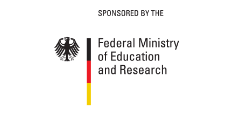
About the costs and benefits of an avian predator (Kestrel Falco tinnunculus) in an urban environment
Urbanization is a global phenomenon that is encroaching on natural habitats and decreasing biodiversity, although it is creating new habitats for some species. The Eurasian kestrel (Falco tinnunculus) is frequently associated with urbanized landscapes, but it is unclear what lies behind the high densities of kestrels in the urban environment.
We chose the kestrel as model species as it shows in Vienna, Austria, the highest known breeding density within Europe (>100 Pairs/100 km²). Occupied nest sites in the city of Vienna were investigated along a gradient of urbanization (percentage of land covered by buildings or used by traffic). Field surveys determined the abundance of potential prey (birds and rodents) and the results were compared to the birds’ diets. A number of breeding parameters were recorded over the course of several years. The majority of kestrels breed in semi-natural cavities in historic buildings in the city centre. Nearest neighbour distances were smallest and reproductive success lowest in the city centre. Abundance of potential prey was not found to relate to the degree of urbanization but there was a significant shift in the birds’ diets from a heavy reliance on rodents in the outskirts of the city to feeding more on small birds in the centre. The use of urban habitats was associated with higher nest failure, partly associated with predation and nest desertion, and with significantly lower hatching rates and smaller fledged broods.
We conclude that high breeding densities in urban habitats do not necessarily correlate with high habitat quality. The high density of kestrel nests in the city centre is probably due to the high quality availability of breeding cavities. Highly urbanized areas in Vienna are associated with unexpected costs for the city dwelling-raptor, in terms both of prey availability and of reproductive success. The kestrel appears to be exploiting the urban environment but given the poor reproductive performance of urban kestrels it is discussed whether the species is falling into an ecological trap.






